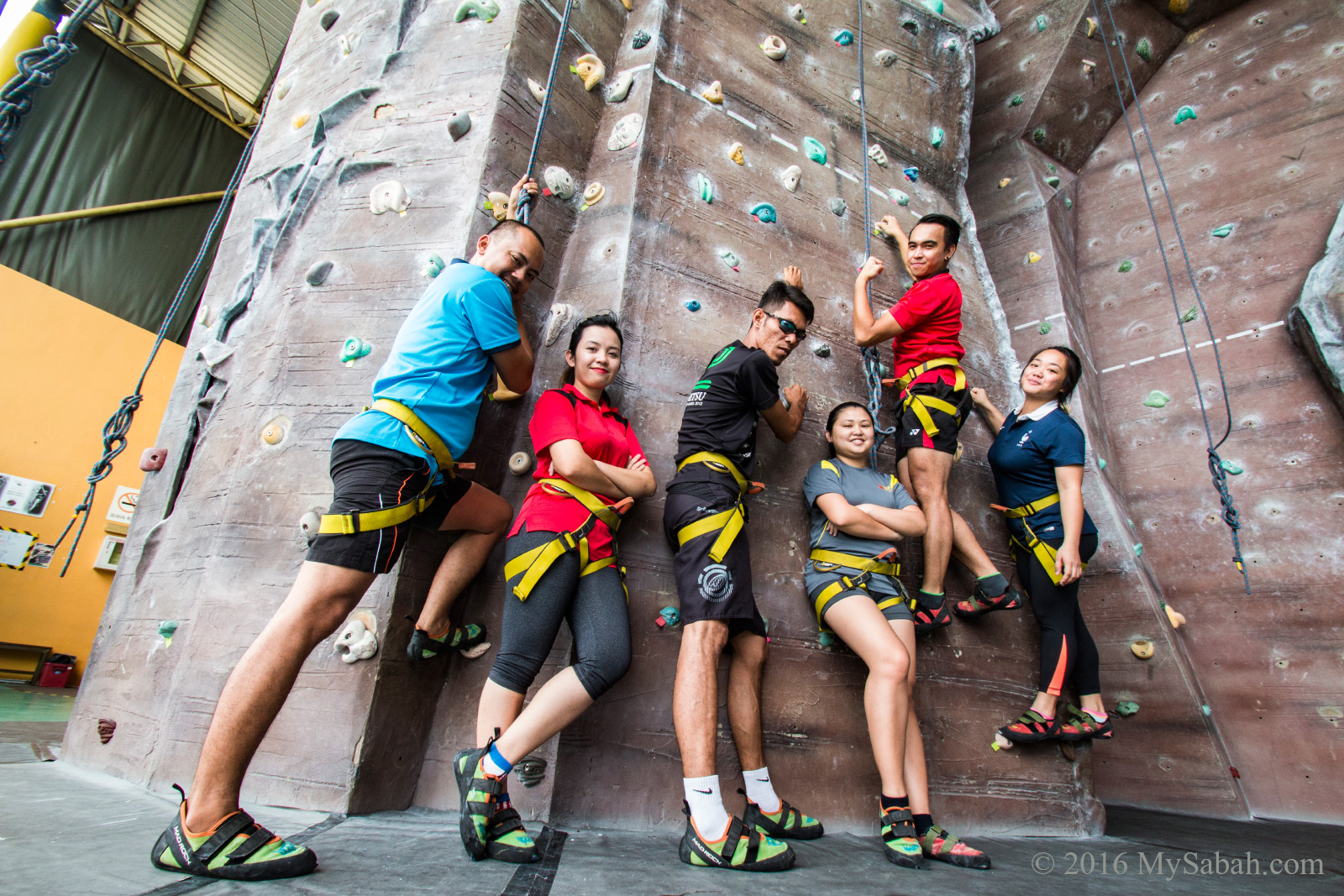Continued from Part 4…
Day 4 in Maliau Basin
I am ready to go home today morning. We have to cancel our trip halfway coz Ms. S is injured and suffer muscle pain. When all of us are in “quitting” mode, Ms. S has geared up and I can sense the “Go! Go! Go!” mood on her face. “Did you tell her… our decision?” I ask the others quietly. They look at one another and shake their heads. What?!! None of us told her the bad news? Probably nobody dares to upset her.
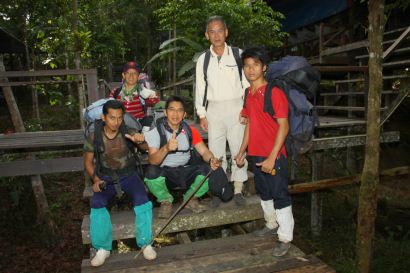
Then she is quite shock to find out the rest of us have decided (without her) to cancel the trip and return to Maliau Basin Studies Centre today. She assures J, our guide, and O, Senior Ranger, that she is almost fully recover, after she did the stretching exercise advised by the doctor over the night. J is very doubtful and tries to convince her to stop. Then they quarrel. The rest stay away from the “storm” and wait. It is not for us to decide because only Ms. S knows her own condition.
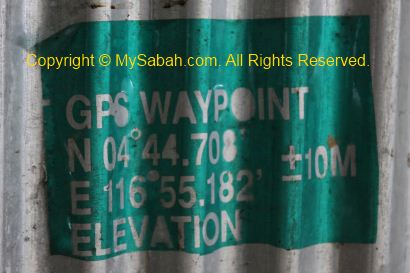
Above: GPS reading of Ginseng Camp
Soon the thunderstorm is over, the face of our guide looks pale, like a cock losing a fight; he comes and informs us to get ready to Nepenthes Camp. We almost jump and scream in joy. Though we wish to continue the trip, we really concern about her condition. We don’t want her to proceed just because she doesn’t want to spoil our trip. Again, she shows no intention of quitting. The guides say they will observe her condition, if she can’t make it for the first 500 Meters, then we have to turn back. If you read my last blog, you know how terrible the trail is. Later we find that we worry too much. She always walks at the front. The “Iron Lady” is back!
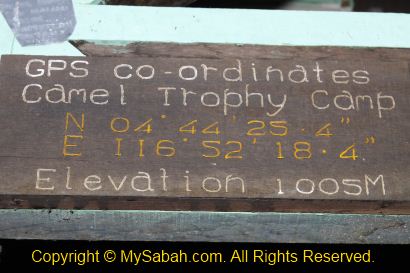
Above: GPS reading of Nepenthes Camp
Going to Nepenthes Camp
At 8:30am, we start walking from Ginseng Camp (566 M above sea level) to Nepenthes Camp (formerly Camel Trophy Camp) at 1,005 Meters. Today is also one of the best days. In 7KM of jungle trekking from 566M to 1,000M in elevation (a lot of climbing then!), we will pass through 3 types of forest, namely, mixed dipterocarp rainforest, lower montane forest and heath forest. We will stay in Nepenthes Camp for a night.
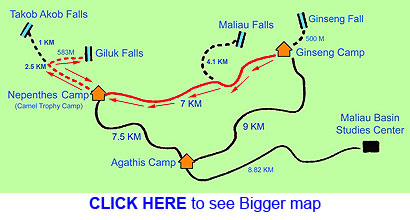
Above: trail (in red) from Ginseng Camp to Nepenthes Camp
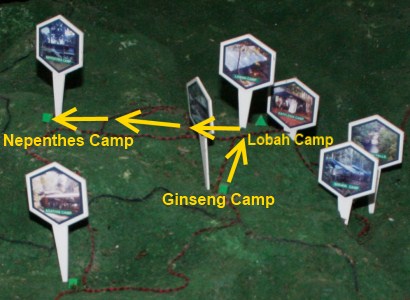
Above: trail in 3D model
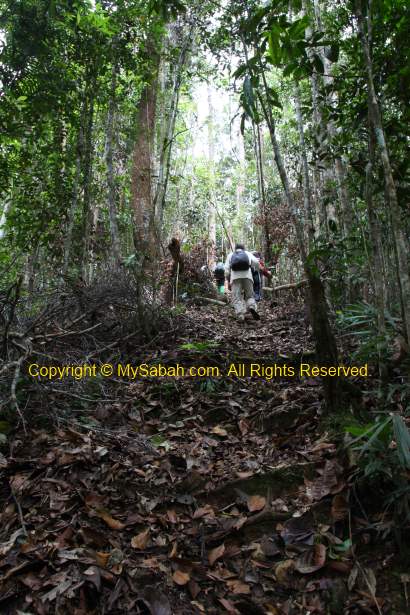
The terrain is as undulating as our previous trails. We first walk in mixed dipterocarp rainforest with many hundred-feet trees, quite similar to what I saw in Agathis-Ginseng trail. For every 100 Meters we ascend, the temperature drops by 0.75 degree Celsius, so it is getting cool and fresh.
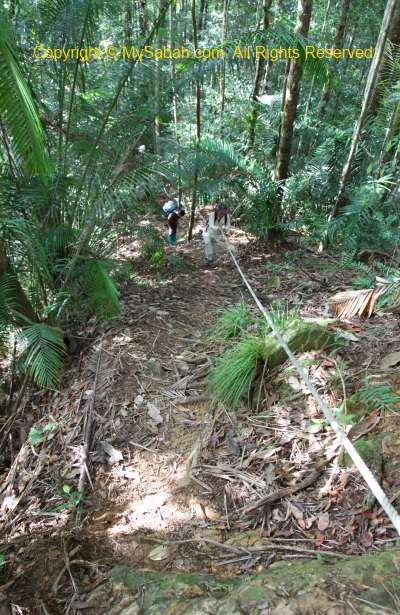
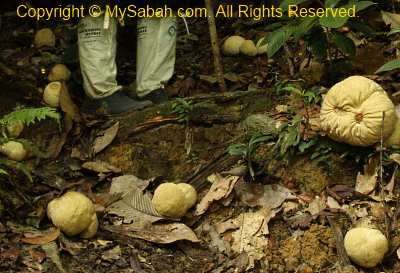
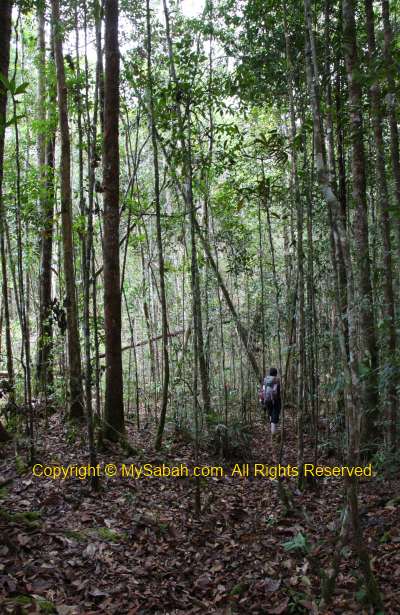
About two hours later, a forest of huge trees changes to a forest full of slim and short trees only about 15 to 30 Meters high. Conspicuous green cushions of mosses, liverworts and lichens are seen along the trail. We have entered the Lower Montane Forest (750M – 850M above sea level). There are some weird plants that you would notice in montane forest (see photos below).
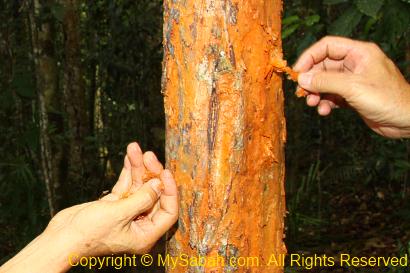
Above: Tristaniopsis sp. tree with orange bark, you can peel off the skin easily.
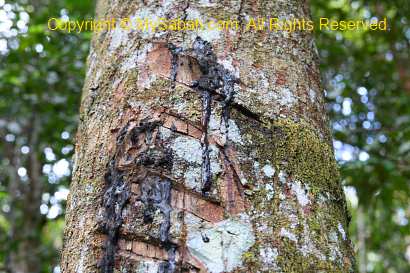
Above: a Rengas tree which can cause intense allergies, and is related to the well known Poison Ivy.
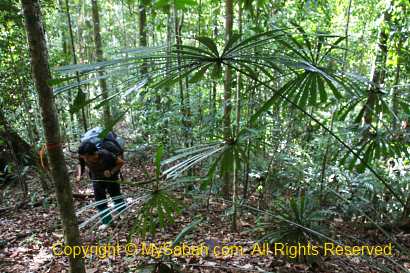
Above: Fan palm is common in montane forest
Heath Forest: Garden of Pitcher Plant
Then we saw the first pitcher plant at 11am. Very soon we saw many more small pitcher plants along the trail. The guide asks us not to waste our time to photograph these ordinary pitcher plants, because there are more big and special ones ahead. And they are right. We enter the tropical heath forest, also a garden of pitcher plant! We can see very obvious change of vegetation; the heath forest contains dense stands of smaller sized, small-crowned & shorter trees mostly shorter than 20 Meters. The trail is quite narrow, but more sunlight due to smaller canopy.
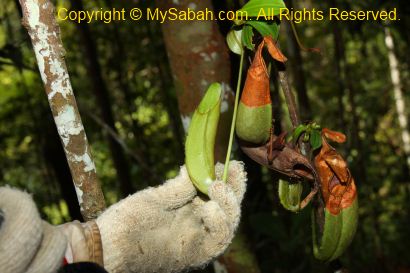
Above: first pitcher plant
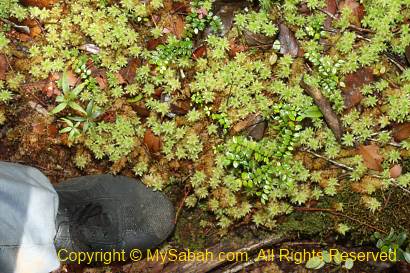
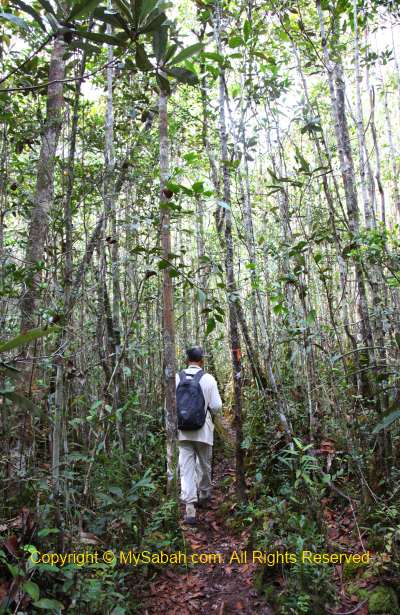
Occur from 900 to 1,600 Meters above sea level and occupy 21% of Maliau Basin, heath forest is a type of tropical moist forest found in areas with leached, acidic, white sandy soils that are extremely nutrient-poor. Heath Forest is locally known as Kerangas in Iban language, the word means a forested land with underlying soils which are unsuitable for growing rice. There are not many heath forest in Sabah and this is the first time I see it.
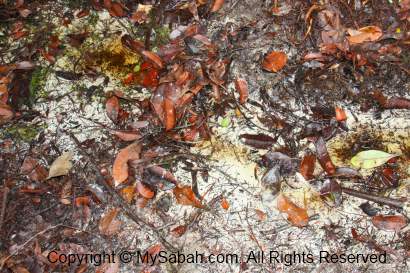
Above: white sandy soil in heath forest
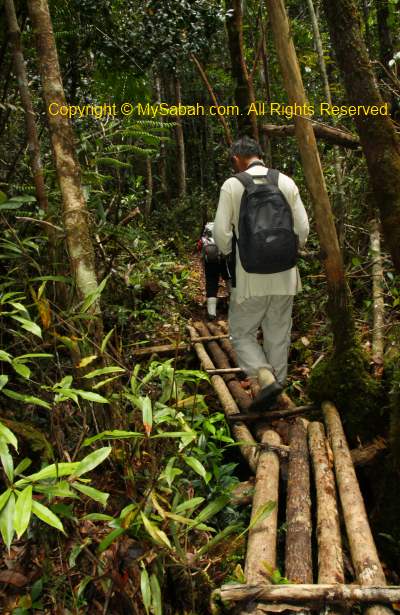
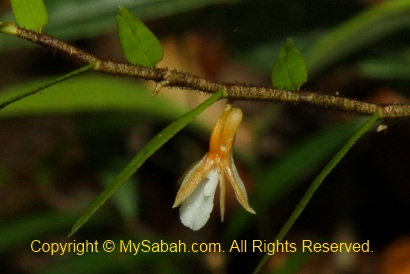
Because of the infertile soil, the plant is rich in tannins, which is indigestible or toxic to plant eaters. The tannins leaching out of the peaty leaf litter is hard to be broken down, so it stays in the water. The reddish brown color of river water in Maliau Basin is mainly caused by heath forest. The forest floor is criss-crossed by tangled roots encrusted in moss, making the ground very marshy and soft.
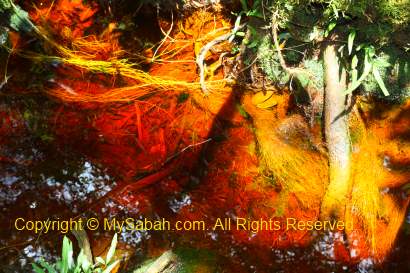
We can see fascinating pitcher plants in every few steps. Some are on the ground, and some dangled up to tree top, attempting to capture high flying insects. Except Maliau and Mesliau, there is no other place in Sabah where I can see such a big concentration of pitcher plant. 9 species of pitcher plant are found in Maliau Basin, namely, N. veitchii, N. tentaculata, N. stenophylla, N. mirabilis, N. hirsuta, N. lowii, N. gracilis, N. reinwardtiana, N. stenophylla x veitchii (hybrid). Most of the pitcher plants I see in this heath forest are Nepenthes veitchii and Nepenthes stenophylla.
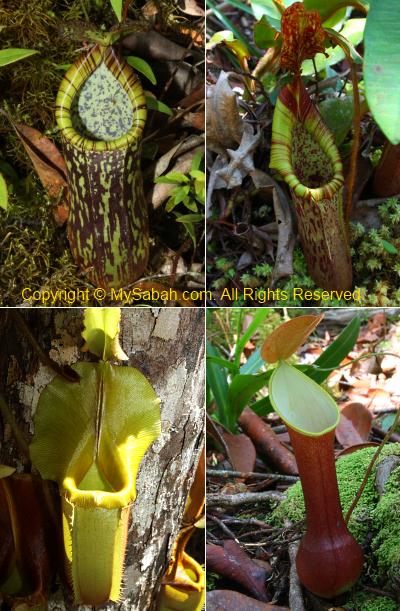
Besides rich variety of pitcher plant, we also found some flowering orchids and Rhododendron. 21 species of Rhododendron are found in Maliau Basin. I was told that many Japanese tourists and botanists don’t want to leave this natural botanical garden as they love it so much. Mr. T is a plant expert, so he keeps me busy taking photos by showing me some unique and rare plants around.
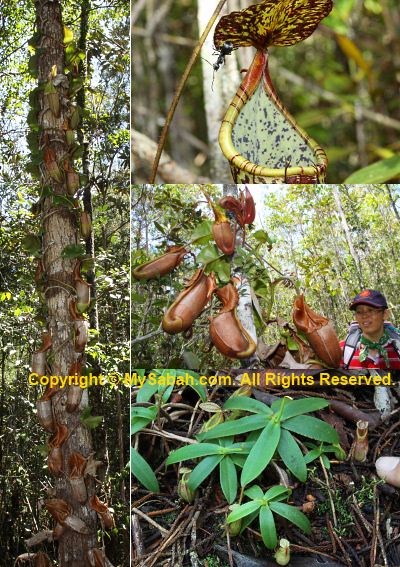
There are fewer leeches in heath forest, but they are bigger here. Probably due to the white sandy soil here, the tiger leech has white, instead of yellow, stripes at the side of its bodies. We don’t see any other animals except a noisy Temmink’s Sunbird. We are close to the camp when we enter the Jalan Babi (Wild Boar Road), which is a clear and wide trail created by migration of wild boars that feed on fallen acorns. You better stay close with your guide because there are many junctions here, as you could be lost easily.
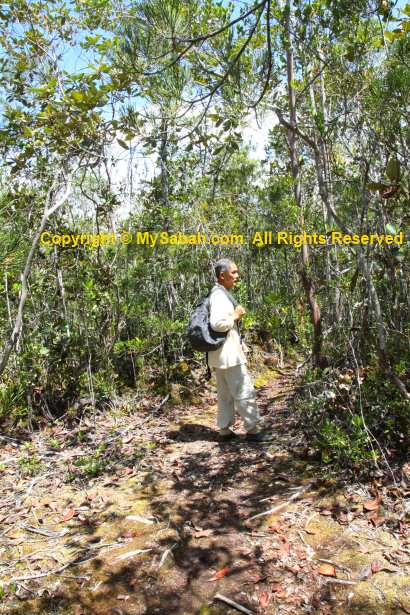
Above: “Wild Boar” road
Nepenthes Camp (formerly Camel Trophy Camp)
We arrived the Nepenthes Camp at 2pm (a total of 5.5 hours of walking). Constructed by the participants of Camel Trophy (hence the old name “Camel Trophy Camp”) in 1993, Nepenthes Camp was the first and oldest permanent camp within the Maliau Basin and it is located strategically at the meeting point of lower montane forest and heath forest on southern plateau of Maliau Basin.
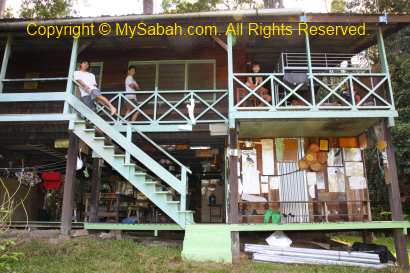
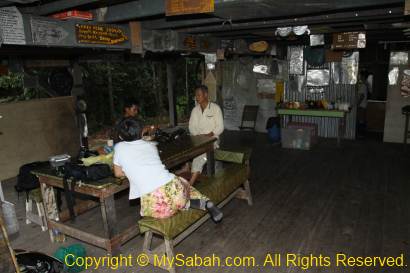
Nepenthes Camp is a 2-storey wooden house smaller than Ginseng Camp. It is complete with bunk beds, showers, kitchen, toilet and solar electricity, which can accommodate up to 15 visitors. Personally I think it is more comfortable than Ginseng Camp, coz it has proper rooms with beds. The ground floor is the kitchen, dining area, toilet and shower room, and our rooms are in 1st floor.
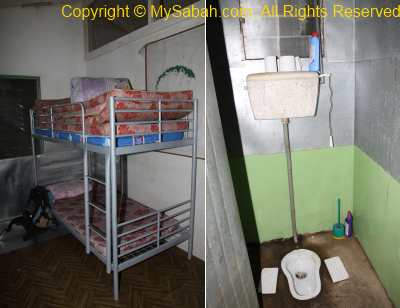
Nepenthes Camp is the oldest camp and frequented by most visitors, so it has the most number of plaques (nearly hundred) created by tourists. Some plaques are very creative and interesting. We can spend hours just to look at them, which is great, as we have nothing to do at night. We also find the names of our friends on some plaques.
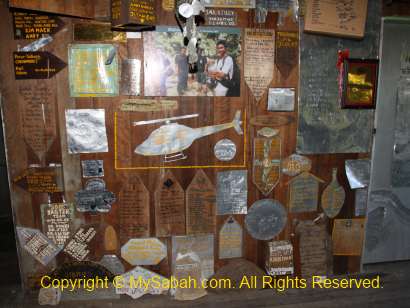
Above: part of the plaque collection in Nepenthes Camp
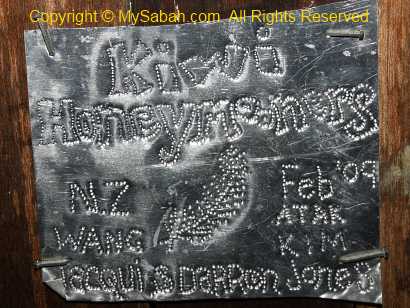
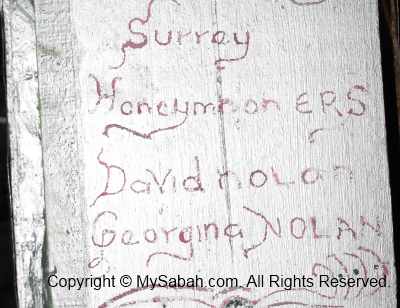
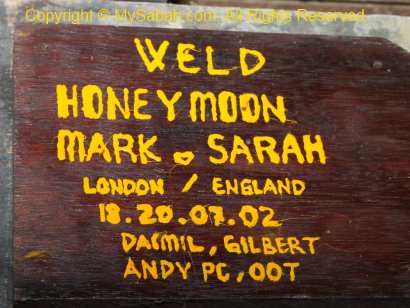
Above: Honeymoon in Maliau Basin. Are they serious?
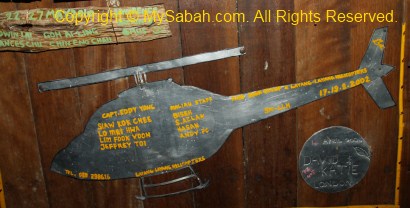
Above: this one made in 2002, probably the oldest plaque
Giluk Falls
I have a quick lunch at Nepenthes Camp, then proceed to Giluk Falls at 2:30pm. Ms. D and Mr. T are tired and so they don’t follow me and Ms. S. We walk so fast that we arrive Upper Giluk Waterfall in an hour. Giluk Falls is also a multi-tier waterfall but it is much more smaller than Maliau Falls. However, it has the beauty of its own.
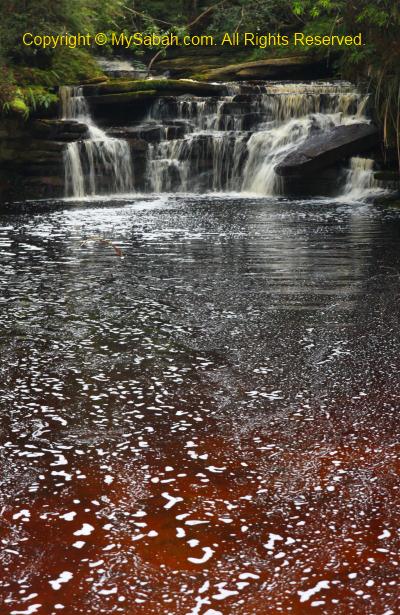
We can see white foams flowing slowly on the water (look like someone does her laundry in the upstream). Actually these frothy white foams are created by soapy saponins from the leaves, and they are commonly seen on the river around heath forest. The reddish brown river is rich in Humic acids, produced by, and washed from, the very slowly decaying leaf litter beneath the heath forests and highest montane forest. Humic acids are difficult to degrade so they remain in the river. The water is also low in oxygen level, so only 4 fishes and 2 crab species are found in the rivers of Maliau Basin.
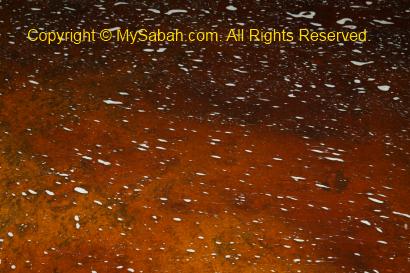
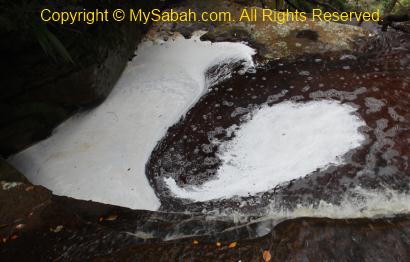
Due to time constraint, we don’t go to Takob-Akob Waterfall, which is far away with very challenging landscape. We are back to the Nepenthes Camp around 5:20pm.
Update (May 2011): I visited Takob-Akob Falls, the tallest waterfall (38 Meters) in Maliau Basin, in my second trip. You may watch the video below:
Click Here for bigger video
The Evening
The water pump in Nepenthes Camp broke down, so we have very limited water that we have to take our shower in a river nearby. But I have to climb down a 5-feet drop, walk on the dirty muddy riverside to the river, so I give up. I get a scoop of clean water in the toilet to wash myself with wet towel.
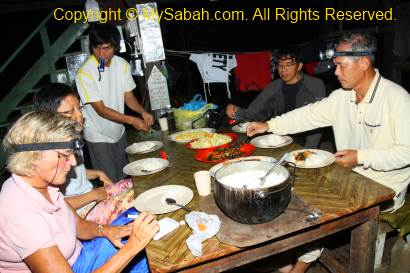
Nepenthes Camp is powered by 6 solar panel on the roof. The electricity is only enough for lighting of our dinner. During dinner time, about 3 Malay Civet cats (Viverra tangalunga) turn up outside our house. We give them our leftover food and they enjoy it. Though they keep a distance from us, they seem to get used to human already. One of them is lack of one limb and being chased away by other two. If you stay still, they can come as close as 2 Meters away. From the info of other web sites, visitors and guides have been feeding them since year 2001 (but I’m not sure if it is always the same group of civets).
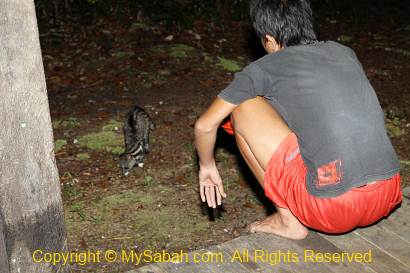
The night in Nepenthes Camp is not too cold, probably we sleep in a proper room. The sky is so clear and full of stars. I can even see the Milky Way (our galaxy) runs across the sky like two parallel silver rivers. It’s so great to be alive. You can’t see this in city coz it is overshadowed by street light and dusty air. We feel so relaxing because we have finished all the challenging trails. Tomorrow we will go back to Agathis Camp and it is mainly descending trail.
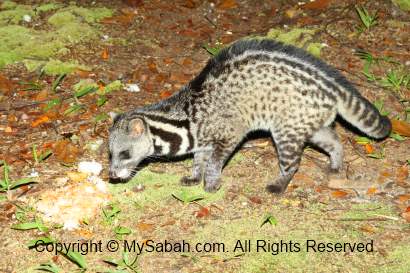
Late in midnight, I heard someone was shouting to the air. Next day I was told that it was a guide who asked for “permission” from spirit so he can pee from the balcony. The reason was – when he took shower with another guide at the river in evening, they felt that “someone” throwing thing at them. He might think that the spirit in forest dislikes him, so he tries to be respectful.
>> Read Next Article (Part 6)
Photos taken in Maliau Basin, Sabah, Malaysia Borneo
All Articles of Maliau Basin Trip:
Part 1. Introduction to Maliau Basin
Part 2. Day 1 in Maliau Basin
Part 3. Day 2 in Maliau. Trekking to the 1st camp
Part 4. Day 3 in Maliau. Maliau Waterfall
Part 5. Day 4 in Maliau. Entering the garden of pitcher plant
Part 6. Day 5 in Maliau. Skybridge & Night Safari
Part 7. Day 6 in Maliau. Leaving Maliau
Part 8. Conclusion & Notes
More Photos
You may check out my Maliau Basin photo album for more pictures:
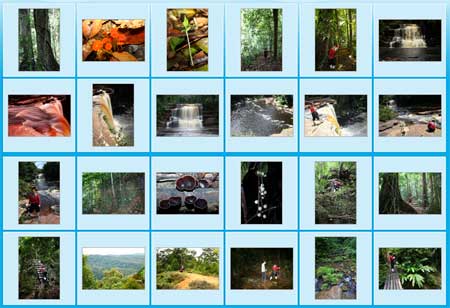
BONUS! More new photos of Maliau Basin…




